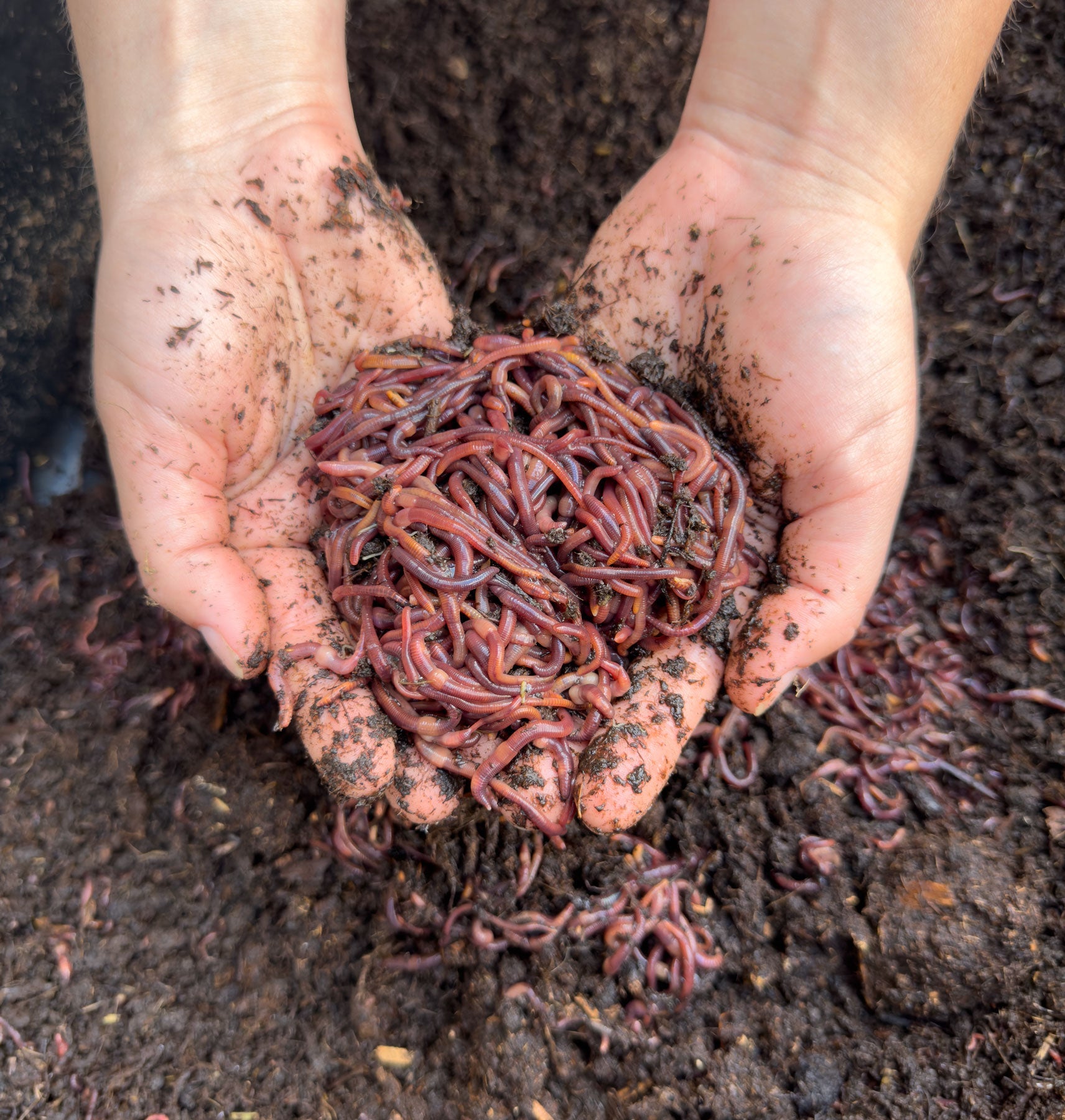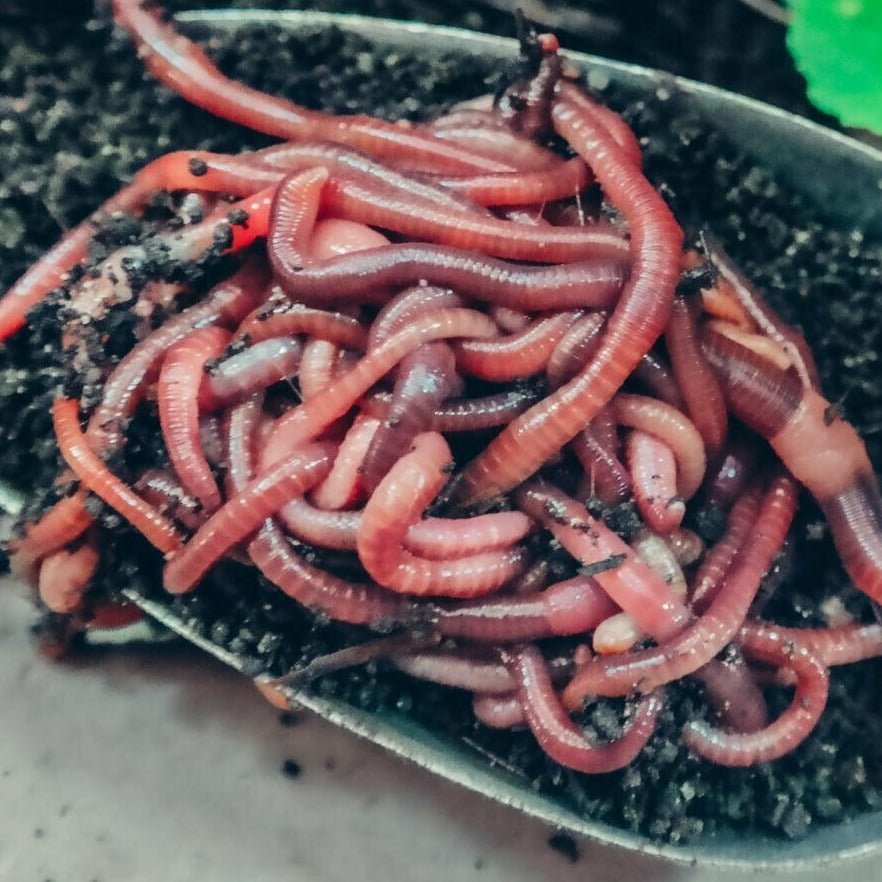Take Care of Your Lawn with the Best Products from Lake Hickory Bait
Take Care of Your Lawn with the Best Products from Lake Hickory Bait
Blog Article
Red Wigglers: The Unsung Heroes of Organic Waste Recycling
Red wigglers, or Eisenia fetida, serve as essential representatives in the organic waste reusing process, transforming thrown out materials into valuable vermicompost. As the globe significantly seeks solutions to battle waste accumulation and enhance farming performance, comprehending the function of these worms ends up being vital.
What Are Red Wigglers?
The exceptional durability of red wigglers, clinically referred to as Eisenia fetida, emphasizes their important function in organic waste recycling. These little, reddish-brown earthworms are typically discovered in disintegrating raw material, such as compost heap and manure heaps. Lake Hickory Bait. Unlike various other earthworm species, red wigglers thrive in nutrient-rich environments and are very effective at breaking down organic products, making them vital for vermicomposting

(Red Wiggler Express)Along with their role in waste decrease, red wigglers contribute to soil health and wellness by boosting soil structure and aeration through their tunneling activities (Lake Hickory Bait). Their existence in composting systems not just improves decomposition prices but additionally promotes a lasting technique to lose administration, highlighting their value in eco-friendly conservation efforts
Advantages of Composting With Worms
Composting with worms, particularly red wigglers, uses many benefits that boost both waste monitoring and dirt wellness. First, these worms effectively damage down organic waste, converting it into nutrient-rich vermicompost that enhances dirt. This process accelerates decomposition, allowing for a much faster recycling of kitchen area scraps and other natural products compared to typical composting methods.
Furthermore, the vermicompost created by red wigglers is including valuable microorganisms, which help boost dirt framework, aeration, and dampness retention. This boosts the total health of plants, promoting strenuous growth and boosted yields in yards and farming setups. The use of worms in composting decreases the manufacturing of greenhouse gases, such as methane, adding to a more lasting waste monitoring system.

How to Beginning Vermicomposting
Developing a vermicomposting system is a straightforward procedure that can yield significant advantages for both waste monitoring and soil enrichment. To start, select an appropriate container, such as a plastic container or wood box, with appropriate ventilation openings to guarantee proper airflow. The measurements should ideally be around 2 feet by 3 feet, enabling ample room for the worms to grow.
Following, prepare bedding material, which can contain shredded paper, cardboard, or coconut coir. This bed linens needs to be dampened to develop an appropriate environment for the worms. Once the bed linen is in area, introduce red wigglers (Eisenia fetida) right into the container, normally around one extra pound of worms for every square foot of surface.
Following the placement of worms, include natural waste, such as fruit and veggie scraps, coffee grounds, and crushed eggshells. With these steps, you will efficiently start a vermicomposting system that adds to sustainable waste management and enriches your soil.
Keeping a Healthy Worm Bin
(Red Wiggler Express)Maintaining a worm container prospering requires regular attention and treatment to make certain the health and wellness of the red wigglers and the efficiency of the composting process. Proper upkeep starts with keeping track of the wetness degrees; the container needs to be moist however not soaked. A great guideline is to preserve an uniformity similar to a wrung-out sponge.
Oygenation is critical. Gently mixing the bedding and food scraps every couple of weeks stops compaction and guarantees that all worms have accessibility to oxygen. In addition, it is vital to feed the worms properly. A well balanced diet of vegetables and fruit scraps, coffee premises, and smashed eggshells need to be supplied in moderation to avoid overfeeding, which can lead to odors and bugs.
Temperature level policy is an additional important aspect. Red wigglers flourish in a series of 55 to 77 degrees Fahrenheit. If the container comes to be too hot or chilly, the worms might become worried - Lake Hickory Bait. Occasionally inspect for signs of wellness, such as worm populace growth and the visibility of healthy and balanced castings. By faithfully managing these aspects, one can preserve a robust and efficient worm bin.
Impact on Lasting Living
The successful maintenance of a worm bin not only profits the wellness of red wigglers but likewise contributes dramatically to sustainable living practices. By reusing natural waste, such as kitchen area scraps and yard debris, red wigglers look at here assist draw away substantial amounts of material from garbage dumps. This decrease in waste not just decreases greenhouse gas exhausts however additionally reduces the environmental concern associated with waste administration.
Additionally, the castings produced by red wigglers offer as a nutrient-rich organic plant food, enhancing dirt health and wellness and promoting plant development. This natural alternative to chemical plant foods supports sustainable farming and horticulture methods, lowering dependence on artificial inputs that can harm ecological communities. In addition, worm composting fosters understanding of waste monitoring, urging people and neighborhoods to take on even more sustainable behaviors.

Final Thought
In summary, red wigglers function as essential factors to organic waste reusing via their effective decomposition of organic products. Their ability to create nutrient-rich vermicompost improves soil health and wellness and supports lasting farming techniques. By integrating vermicomposting right into waste administration methods, people and communities can substantially lower waste while advertising environmental sustainability. The role of Eisenia fetida in promoting healthy ecosystems highlights the significance of these microorganisms in achieving lasting living and boosting dirt fertility.
Report this page